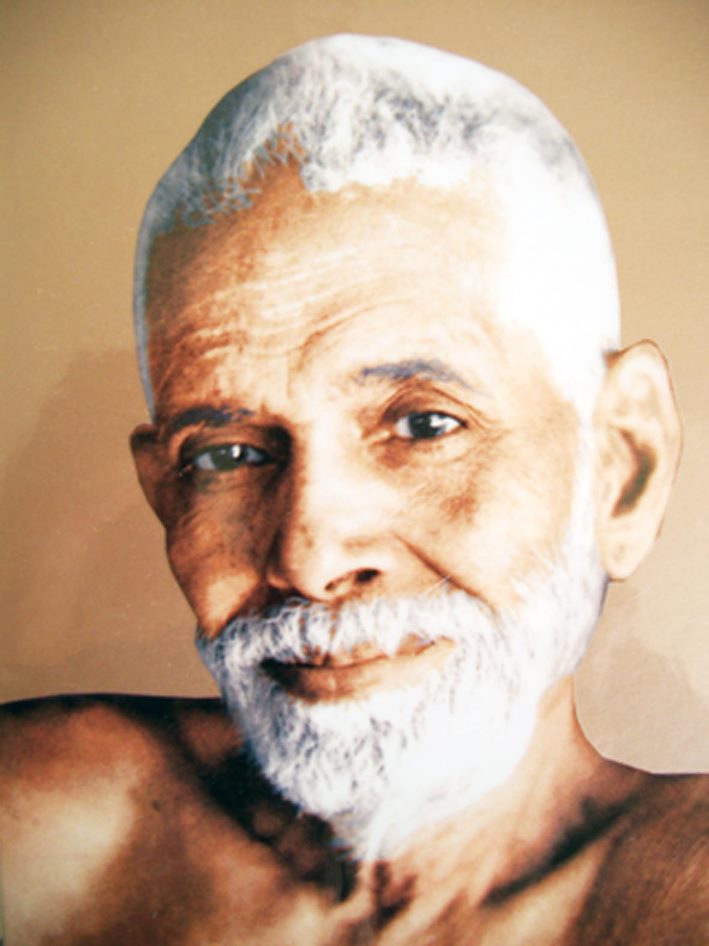This is the second part of the series of posts on Shri Ramana Maharshi.
After leaving a farewell note to his brother, the little Ramana left his house and headed to Thindivanam railway station, as mentioned in the first part of this series here. He bought train ticket to Thindivanam and was left with just 3 anna (1/16 of one Rupee). Neither the big crowd in the train cab or their noise did not affect the boy. The train stopped by Tiruchirappalli and he bought two guavas from there. He ate one of it and was surprised to feel that he was already full and he wondered; someone who ate more than three meals a day until few hours back was full with just one guava!
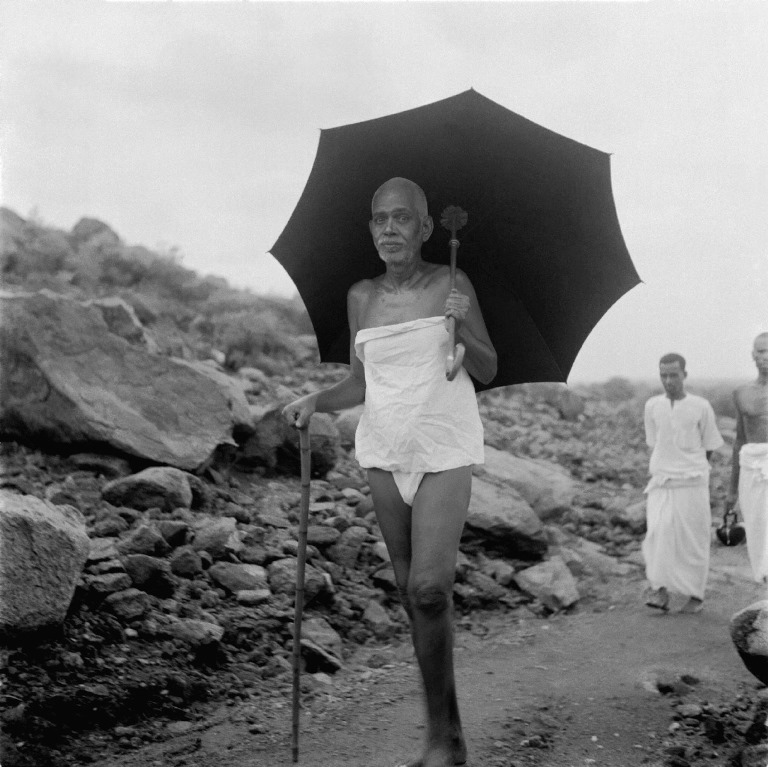
image source: arunachala-live.com
He reached Viluppuram Railway Station the next day and started walking around looking for the bus station where he could catch a bus to Arunachala. However, he was lost and was extremely tired and hungry from all the walking. He walked into a small restaurant for lunch. The kind owner of the restaurant gave him good food and did not take money for that. This was a huge help for him as he could use the money he was left with to buy train ticket to Mambazha Salai (Mango Market). He then walked to Arayani nallur, about 10 miles away from Mambazha Salai, and started meditating in the temple situated on the hill top.
As Venkataramanan continued to meditate, he saw a divine light spreading all around the temple which he initially thought was coming from the shrine (garbhagriha). The light gradually disappeared as he understood that it was not from the shrine.
The boy was exhausted from walking and hunger. He begged for food from the priest. But the priest did not only give him food but also was asked to leave the temple. He then walked to another temple in Kizhur / keezhur and started meditating. He was again asked to leave from the temple as it was closing for the day. One of the orchestra men (melakkaaran – one who plays music instruments) gave his food to this hungry boy. The boy, after eating the food given to him, started walking and fell asleep somewhere on the street.
He noticed that he was surrounded by people as he woke up on the next morning. It was Sri Krishna Jayanthi (Krishna’s Birthday) and he still had to walk a long way to reach Arunachala! He did not have the money to buy train tickets and the only options left for him was to either sell his earrings – the only thing left with him other than his clothes – or walk again. He gradually ended up selling away his earrings for 4 Rupees and used that money to buy train tickets to Thiruvannamalai / Arunachala! He reached Arunachala on 1 September 1986! Arunachala! – the realization that he was at the same place whose name drove him into spirituality made Venkataramanan extremely happy and joyous.
His heart throbbing with joy, Venkataramanan hastened straight to the sanctum of the temple. As to welcome HIS favorite child, all the gates and the doors of the temple, even that of the inner shrine, stood open and there was no one else inside! Standing before his Father Arunachala, the boy started praying, “I have come at your call, sacrificing everything I had. Oh Lord, please accept me and do with me as you will…”
He renounced everything – including his upanayanam (Poonuul), remaining money, shaved off hair from his head and worn a Kaupinam (traditionally worn by Indian males as an undergarment / loincloth). Having no idea about where to stay or sleep, he started wandering around for almost 3 years, mostly meditating and sleeping in places near to the temple.
“Your duty is to be and not to be this or that. ‘I am that I am’ sums up the whole truth. The method is summed up in the words ‘Be still’. What does stillness mean? It means destroy yourself. Because any form or shape is the cause for trouble. Give up the notion that ‘I am so and so’. All that is required to realize the Self is to be still. What can be easier than that?” – Ramana Maharshi
This is when Venkataramanan realized that God is omnipresent and cannot be residing only in the temple and that his frequent visits to temple is futile. He then went to Ayiram Kaal Mandapam (a hall with 1000 pillars) which is believed to be built in AD 1569 during the beginning of the Nayak Dynasty and went into deep meditation, Tapasya. He was soon branded as a crazy man and was constantly troubled by the mischievous kids, urchins, who even pelted stones at him while he was meditating!
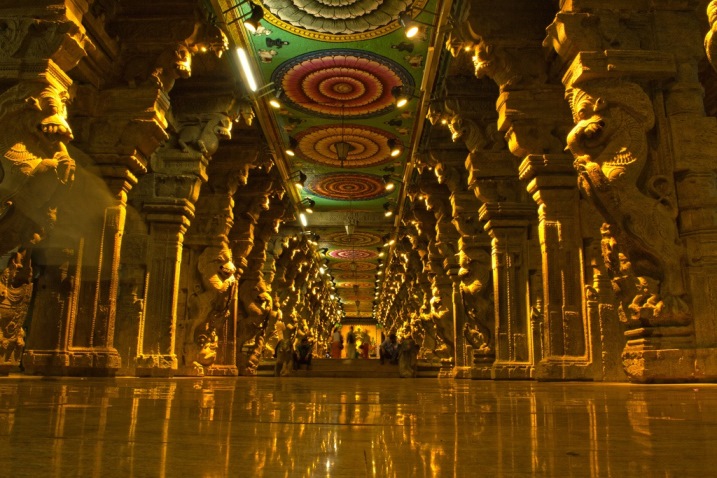
Venkataramanan was forced to move away from there to a dark, underground vault (Paathala Lingam) and he continued his meditation.
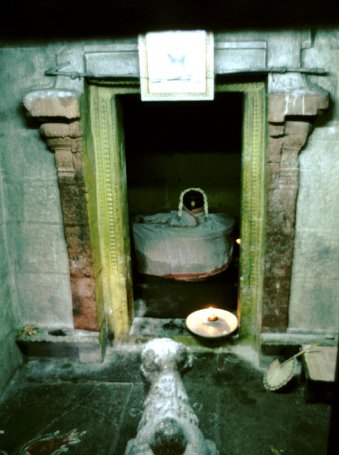
image source: davidgodman.org
He spent hours in Pathala Lingam which was a dark, damp cell, completely lost in his Tapasya, causing his body to develop sores and worms started crawling out of his flesh. However, the boy was in such deep meditation that he did not even realize his body was bleeding and was in pain! Local urchins continued to trouble him and pelted stones at him. Hearing about the “crazy man”, a person with the name, “Venkatachala Muthali” who gradually became Shri Ramana’s devotee, along with some others lifted this boy out from Paathala Lingam and brought in front of Subramanya Alayam (Subramanya Shrine). Due to the intensity of his meditation, with an Antarmugha Drushti, and being absorbed in the effulgence of bliss, the boy did not even realize that he was carried by some people and brought to another place! (Antarmugha Drushti: It is about focusing the energy on the Self than the thought (from Thought attention to Self attention). One should enquire, “To whom did this thought arise?” and it will be known to you that the thought arise “to me”. If one then repeatedly and vigilantly enquires, “Who am I?”, then it turns the mind back from the thought to the very source of our Self, realizing that there is no one to attend to that thought, causing the thought to subside and destroy all other thoughts. This way, thoughts are burnt like the stick used to stir the funeral pyre burns in the same pyre. Meditating in such a way by repeatedly asking, “Who am I” as a means of Self Enquiry, keeping the mind fixed in the heart, the attention on the Self, as in a Self Wardness is called Antarmukham.)
The intensity of his meditation, his Tapasya, started receiving attention, gradually reaching his name to a renowned Swami, Seshadri Swamigal who then started to stand guard of the boy, Venkataraman! He was gradually very well taken care of by the people and was known as the “Silent Swami”. The temple priest arranged to provide him fresh milk and food regularly. His devotees had to forcefully put food into his mouth to make the boy eat. He then moved from the shrine to gardens and finally sat under a tree.
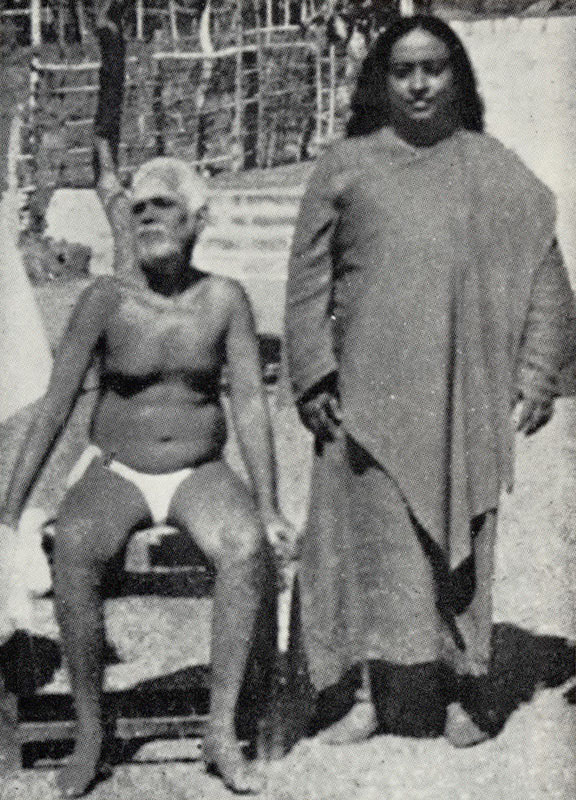
image source: guruji.it
This was almost the same time they had Karthikai Deepam Festival which falls during the month of Kārttikai, according to Hindu Calendar, which is about mid November to mid December. The boy in Tapas started attracting attention from more and more people. Uddhandi Nayinar, a traveler who was very extremely curious about religion and spirituality approached Venkataraman, the young Tapasvi (one who does Tapas is called Tapasvi), and started meditating with him. The traveler, after realizing that whatever he has been seeking all these years was to be found right here in this holy land, accepted Venkataraman as his Guru and became the fortunate one to be the first disciple of Shri Ramana! Uddhandi Nayinar’s care and nursing helped Shri Ramana to keep away from troubles by urchins and mischievous kids even though he was not asking for it.
Is it not amazing what little Ramana – the boy who never knew what was hunger and fed three or four meals a day and loved by the family – had to go through to follow his calling and to seek his truth?
To be continued…
Credit: The following series of posts are inspired by the book “Sri Ramana Maharshi”, written by V.K. Shankaran in 1938, in Malayalam. The sole purpose of these series is to bring this great book by the author to non-Malayalam speaking audience. If this violates any copyrights, it was not intentional and the posts will be removed upon valid requests.

